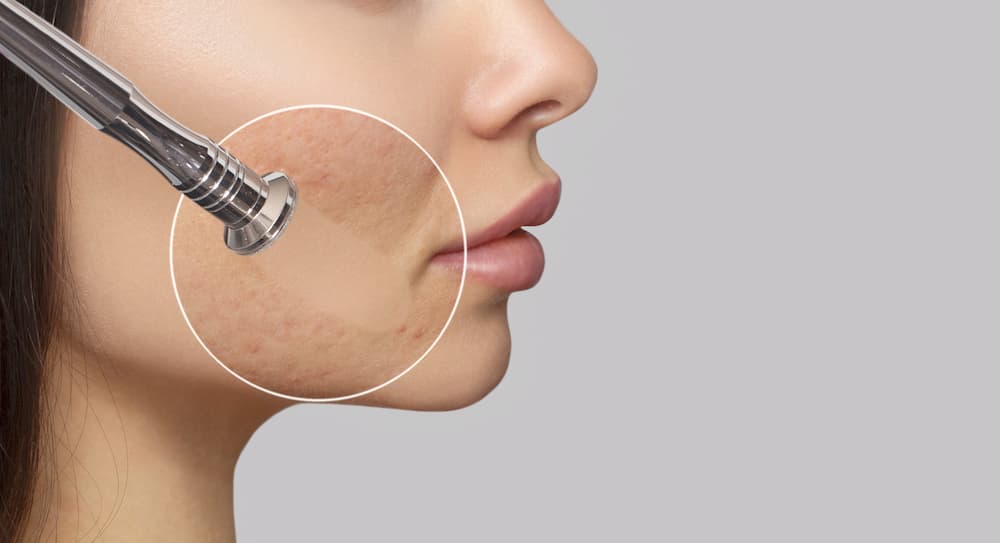
The Miami sun can do a number on your skin, but you can fight signs of aging with the right treatments. One such procedure is microdermabrasion.
What is microdermabrasion? It’s an intense form of exfoliation that removes the topmost layer of skin. Since these cells are exposed to the elements, they get damaged and contribute to signs of aging. Removing them allows the newer skin beneath to flourish.
What Does Microdermabrasion Do?
If you have a skincare regimen, you’re probably wondering if you need the assistance of an aesthetician. Isn’t exfoliating once or twice a week enough?
While exfoliation is a crucial part of skincare, it doesn’t have the same effect as professional treatment. Chemical or physical exfoliation gets rid of dead skin and dirt, but it doesn’t go beneath the surface to impact signs of aging. Mechanical exfoliation such as microdermabrasion completely removes the top skin layer, not just the debris resting on it.
Advantages
Mechanical exfoliation is popular because it reduces the appearance of the following:
- Large pores
- Wrinkles and fine lines
- Acne scars
- Hyperpigmentation
- Stretch marks
- Age spots
- Blackheads and acne
Additionally, the intense exfoliation provides a refreshed and glowing appearance.
Disadvantages
Like any procedure, microdermabrasion has its downsides:
- Sensitivity to sunlight
- Stinging or burning
- Bruising
- Redness
- Swelling
These side effects are part of the body’s natural immune response to removing skin cells. They usually last a few days and signify that the procedure is working. During this time, your body should ramp up collagen production to accommodate the lost cell layer. Collagen makes skin elastic, so it’s essential for fighting wrinkles and plumping skin.
What Are the Different Types of Microdermabrasion?
Mechanical exfoliation is non-invasive, so there’s no need for anesthesia or prolonged recovery time. Due to the intensity of this treatment, it must be performed by licensed skincare professionals. There are several types of microdermabrasion machines, each of which uses a different method to accomplish the same goal.
Hydradermabrasion
As you may have guessed, hydradermabrasion pairs hydration with exfoliation. Skincare professionals use a specific machine with three different attachments to renew your skin’s surface.
The first step is clearing away dirt, excess oil, and dead skin cells with a vortex-like wand. Next, your aesthetician extracts blackheads and pore debris with the vacuum attachment. Finally, the pen attachment distributes nourishing serums for ultimate hydration.
Crystal Microdermabrasion
Crystal microdermabrasion uses sodium bicarbonate and aluminum oxide to scrub away skin cells. The process is like physical exfoliation, except the crystals are sprayed by a wand attachment, which simultaneously sucks up used crystals and cells.
Diamond-Tip Handpiece Microdermabrasion
When it comes to precision, diamond-tip handpiece microdermabrasion is the top contender. Unlike the other types listed here, this treatment doesn’t spray the skin. Instead, aestheticians use a wand with a specially made diamond tip to gently scrape away surface cells. Skincare professionals have complete control over how deeply the tip exfoliates, which allows them to work carefully around sensitive areas such as the eyes.
Additionally, since there are no added materials, there’s no risk of clients accidentally ingesting or inhaling stray crystals. The handpiece also suctions up loosened dirt and cells as it goes, leaving your skin looking radiant.
How Long Does a Treatment Take?
Mechanical exfoliation sessions can take between 45 minutes and one hour. You should see a difference immediately, and the results will grow more noticeable over the next 24 hours as collagen production ramps up.
What Can You Expect After Treatment?
One of the best things about this procedure is that there’s no downtime. You can go right to work or out on the town, though you may want to wait a few days before applying makeup.
Treatment Schedule
As human beings, we’re constantly shedding skin cells and making new ones. That means that over time, the effects of microdermabrasion fade. However, this cycle is also what makes microdermabrasion successful, as you always have newer cells hiding under your epidermis. To keep up with your body’s natural skin shedding cycle, you should get microdermabrasion in two- to four-week intervals.
Recovery
Since your skin will be sun-sensitive for a while, you should make sure to apply sunscreen before hanging out on a Tampa beach. Of course, you should be applying sunscreen anyway to prevent premature aging and increased cancer risks, but be extra careful for the few days after your procedure.
If you want to revitalize your skin but don’t want to spend a day recuperating, microdermabrasion may be the procedure for you. Fortunately, Arviv Medical Aesthetics offers diamond-tipped handpiece microdermabrasion services at our Miami and Tampa medspas. To learn more or make an appointment, call us at 813-855-0111 for our Tampa location or 305-340-9002 for the one in Miami. You can also contact us online.
Image Source: dimid_86 / Shutterstock


